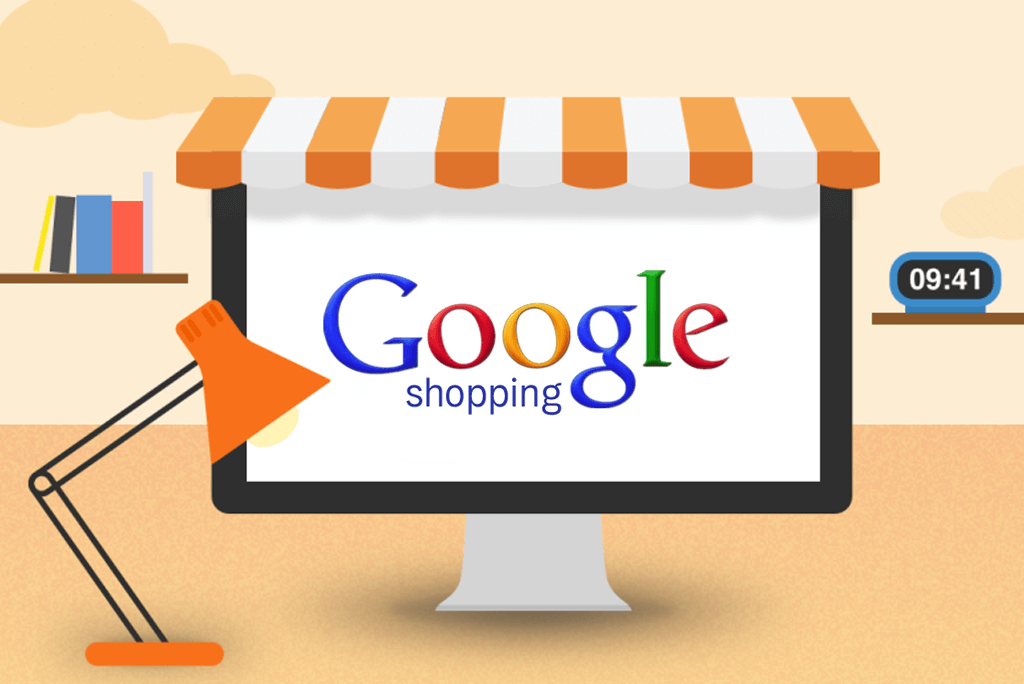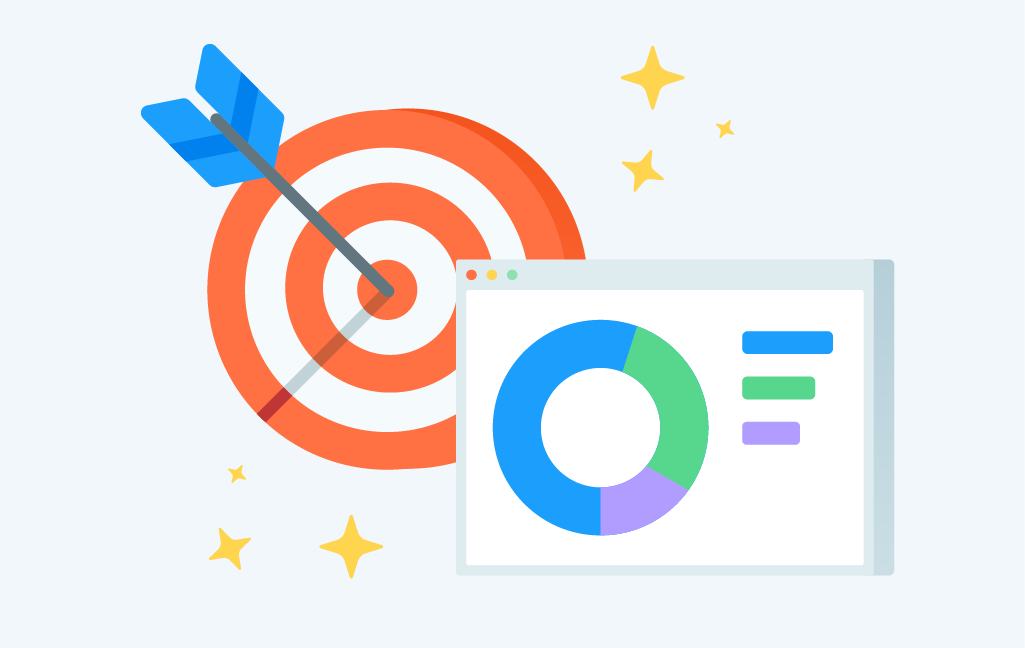Google Shopping is one of the most effective advertising instruments to promote your online store products. It has gained great popularity with online merchants.
Google Shopping is a type of advertising campaign in Ads that allows you to advertise your online store products on Google. Google Shopping, in fact, is a commodity aggregator of online stores.
There is a lot of information online describing how attractive Google Shopping Campaigns are, and some people say that you can make money “hand over fist” there. We don’t deny that it is possible. But it is also true that Google Shopping is a constantly developing platform and it is necessary to monitor all changes and know all technical features in order to be effective.
There are three levels of issue in Shopping:
First level. First search page: Google product advertisements in the Google search network. There are several points in the ad: photos, price, store rating, name of the shop, heading + additional information.
Second level. Shopping page – Google Shopping. This is a marketplace (like Yandex.Market, for example), where sellers place their products, and customers are able to find them, go to the seller’s website and make a purchase there. Its advantage is a lower cost per click compared to ads on the search network.
Third level Product page – Google Shopping. On this page you can read a more detailed description of the product model and compare its price in different stores.
Understanding of Google Shopping Campaign Management
GoMage Company has extensive experience in researching different shopping engines including Google Shopping. Our bestselling extension – GoMage Feed Pro – is developed to empower merchants with the ability to widen their markets by uploading product information directly to shopping engines.
Our clients ask us a lot of questions concerning Google Shopping and, in this article, we’d like to review some common missteps that can take place.
Incorrect Google Shopping feed settings
Google Shopping is a platform that has its own structure, and it is not recommended to send the data from an online store to the Merchant Center directly. You can win, but it is appropriate to say that nothing should be done in haste. This is only a short-term benefit.
Doing so, you completely ignore Google Shopping feed settings and your product data will not meet the requirements of the platform. Consequently, the effectiveness of advertising will be very low. For instance, the titles from your online store will be placed as the titles in your Ads, and this is not normally the correct approach.
Google Shopping Campaign Structure
Campaigns with a single ad group, which includes all the products of an online store at once – is an ineffective deal. The budget is wasted, conversions are underpaid, in short, as a result you’ll get nothing good. The racket effect appears if the trading campaigns do not have a well-thought-out structure and settings for finding the most profitable products/requests and screening out the least effective ones.
For example, a common rate is set in a campaign with a single product group quite often: how to set up google shopping. The disadvantage is that you cannot select a bid specifically for the product.
All products differ in cost, margins, profits. There is no reason to set the same rate for them when all other indicators differ.
HOT TIP! Strategy is not only about structure, but also about techniques that can be used to increase the effectiveness of campaigns. Therefore, below you will find a couple of options for structures + a couple of strategies that can be applied regardless of how your campaigns are organized.
Bidding-Based Query-Level Structure
Shopping campaigns cannot be targeted to keys. And, of course, since there are no keys, then it won’t work for them. It can be a real problem. This is what the bidding-based structure solves at the query level.
This strategy is not really suitable for low-budget businesses. You need to create 3 campaigns, and therefore divide the budget between all of them for this strategy. The budget should be enough for at least 20-30 clicks per campaign per day, i.e. if the cost per click is on average $1, then the budget should be at least $20 per day for each campaign, and that is $60 per day for 3 campaigns. And this is the main restriction on the use of the structure, otherwise it will suit different businesses, regardless of the volume of the range.
Bidding at the request level allows you to segment traffic into 3 categories of requests: basic, branded, grocery. Just like the search campaigns! Segmentation uses priority setting, shared negative keyword lists, and total budget for all 3 campaigns.
The highest priority gets total campaigns. There are two reasons for this:
- first, assigning a high priority to a general campaign allows you to get more traffic;
- secondly, we will have lists of negative keywords, with the help of which we will distribute the traffic into relevant campaigns.
For all three campaigns, the total budget is used, because just such a move will force all 3 campaigns to participate in the same auctions. So, it’s here that the lists of negative keywords will manifest themselves in all their forces, directing traffic to the right campaign, taking into account the wording of the user’s search query.
How Much Does Google Shopping Campaign Cost?
Google does not have a minimum bid or a minimum cost for Google Shopping / Product Listing Ads. You can choose a cost per click as low as $0.01 yourself, and there is no minimum daily budget, so you have a lot of flexibility with how much you spend on Google Shopping, which is definitely really convenient.
Google Shopping can cost you $1 a day, $1 a month, or more than $500 a day, depending on how much visibility you want your products to have.
You can decide how much Google Shopping costs by increasing or decreasing your daily budget and your PPC bids. Remember that if your costs on Google Shopping are low, you also will have low Google Shopping ad visibility.
Additionally, it’s important to know that Google will stop serving your ads once your Google Shopping daily budget is depleted. So if you have a $40 max daily cost on Google Shopping, your Google Shopping ads will show up until that $40 is depleted. If you have a high Google Shopping average CPC cost with a low Google Shopping cost, your ads will only appear for a fraction of the day as you will run out of spend more quickly.
The amount of goods you have, also plays a huge role on how much your Google Shopping campaign will cost. If you have 200,000 products at a cost of 40 cents per click, you will spend a lot more than a merchant with 200 products at the same cost per click. Google determines which ads to display on Google Shopping based on how the keywords in your data feed match a consumer’s search, in addition to the CPC bids you set up in your Google Shopping PPC campaign.
Google Shopping Campaign Metrics
We would like to show you a list of the most important metrics on Google Ads.
- Clicks. Just the number of clicks on your ad.
- Impressions. Allows you to know how many times users have seen an ad. It is counted each time when it appears on the search results page or on the Google search engine.
- Clickable / Click Through Rate / CTR. The ratio that shows how often users click on your ad after viewing it is a very important indicator of the effectiveness of advertising.
- Quality Score. Score from 1 to 10, which Google assigns to an advertising campaign. The more relevant your ads to visitors, the higher the quality score and the lower the cost per click (CPC).
- Average Cost Per Click. The average amount you pay per click on your ad, given that different keys and placements may have different maximum cost per click. It is calculated as the ratio of the total cost of clicks to their number.
- Average Position / Average Position. A score from 1 to 7, which allows you to rate the rating of your ad compared to competing ads. The order of placing ads on the page depends on the rating.
- Impression Share Percentage Received. This is the number of impressions received, divided by the number of possible impressions in percent, i.e. the number of auctions won in relation to the possible impressions. The higher the score, the more efficiently your ad works and squeezing out more of your impressions is more difficult. The share of impressions can change when new competitors appear or more aggressively assign rates in the segment.
- Conversion. Conversion is any successful action that you select: selling a product, downloading a file, ordering a callback from the site, and so on.
- Cost per conversion. This is your total ad cost divided by the number of conversions. Also referred to as Cost Per Acquisition and Cost Per Action (CPA).
- Conversion Rate. This is the number of conversions divided by the number of clicks.
Google Shopping Feed Information for Magento
Initially, Magento had a special extension – TheFind – that was developed to import products to shopping engines. Back then, the Google Shopping Feed feature was provided in the default version of Magento. But the support of this feature was discontinued in 2015 because Google changed its Shopping API from V1 to V2.
So, to automate the process of the feed generation and product import to Google Shopping, you should use a special Google Shopping extension for Magento. Unfortunately, there is no other way to make the process easier. If you face such a task, we recommend paying attention to our extension – GoMage Feed Pro that is available for both Magento 1 and Magento 2.
Detailed information on how to generate the Google Shopping Feed for Magento is available here.
For instance, in your Magento online store, you can have the product “T-shirt” in three different colors (red, blue and green). That means you have the product that has SKU with the attribute “color” and the values of this attribute should be red, blue and green. So, you have only one product in your store, for effective Google Shopping campaigns, you need to organize three different color version items.
You potentially reduce the click rate on your ads if the product image does not match the color that users are looking for.
Another important advantage of this approach is that each version receives a unique ID, so you will be able to analyze the statistics of each ad and investigate which version of the product is in greater demand.
This applies not only to color but also to the attributes of “size” or “material” and so on.
Not optimizing product titles
In fact, it is not enough to provide a complete range of products (by doing what is described above) – it is also significant to consider what should be included in the title. For this, you need to make a detailed analysis of queries and search keywords. There are some tips you can use:
- Include brand name in the title. Many users prefer to search by brands, so if you use them in the title, you have more chances to catch your clients.
- Include all variations of products in the title. In other words, size, pattern, color, style – all these characteristics can be placed in the title. These details make your title more descriptive. You can also include “big” and “tall” options or “try for size”, if they are appropriate for your store.
- Indicate a gender in the title. For instance, “Big and Tall Men’s Green T-shirt”. It is a much stronger title than just “T-shirt”.
- Indicate Manufacturer part number (MPN): this attribute can be very useful in such segments as hardware, household appliances, auto parts and many others.
Lack of experience in bid settings
Bid landscapes is the tool provided by Google for estimation of the performance of different ad groups, criteria, and campaigns using different scenarios. Using it, merchants can optimize their bidding strategy.
But, this is not enough. Lack of experience in the organization of Google shopping campaigns can lead to merchants have no idea if they should bid up, bid down or keep a bid at the same level. In addition, constantly increasing competition on the platform makes advertising expensive.
If you are planning a large campaign, maybe it is more reasonable to ask for help from specialized Google Shopping partners. Google Shopping is becoming increasingly attractive for online advertising. This increases competition between merchants who’d like to use this channel, therefore the effectiveness depends on how well planned and organized your campaign is and will be.






